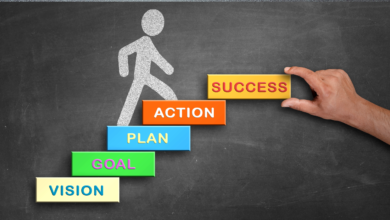Innovate and Excel: Education for Tomorrow’s Leaders!

Innovate and Excel: Education for Tomorrow’s Leaders!
In today’s rapidly evolving world, the landscape of education is transforming at an unprecedented pace. The traditional methods of teaching are making way for innovative approaches that cater to the needs of tomorrow’s leaders. This article delves deep into the realms of innovation and excellence in education, dissecting various aspects, applications, and challenges faced in the process.
Introduction
Education stands at the crossroads of tradition and innovation. As we march forward into an era defined by means of technology and globalization, the request for redefining education becomes more apparent than ever. Innovations in teaching methodologies, curriculum designs, and educational technologies are reshaping the way we learn and teach. This article explores the very essence of this transformation, shedding light on the challenges faced and the applications that are driving this change.
Embracing Change: The Core of Educational Innovation
In a world wpresent change is the only constant, education cannot afford to remain stagnant. Embracing Change: The New Paradigm in Learning introduces the concept of dynamic education, wpresent adaptability and flexibility are key. This section explores how educational institutions are adapting to change, embracing new technologies, and creating an environment where students thrive.
Technology in Education: A Game Changer
Technology in Education: Bridging Gaps and Building Futures discusses the pivotal role technology plays in modern education. From interactive smartboards to immersive virtual reality experiences, technology is bridging the gap between traditional and contemporary learning. This section outlines the various technological advancements revolutionizing classrooms and empowering educators.
Tailored Learning: Meeting Diverse Needs
Every student is unique, and their educational needs vary. Tailored Learning: Nurturing Individual Potential delves into the concept of personalized learning. Educators are now employing diverse teaching methods to cater to individual strengths and weaknesses. This section explores adaptive learning platforms, differentiated instruction, and the impact of tailored learning on student outcomes.
Challenges on the Horizon: Navigating Educational Hurdles
While innovation propels education forward, it doesn’t come without challenges. Challenges on the Horizon: Overcoming Obstacles in Modern Education outlines the hurdles faced by educational institutions. Funding constraints, access to technology, and resistance to change are among the obstacles discussed in this section. Moreat an terminate, it provides insights into how these challenges is capable of be addressed collectively.
Applications Across the Spectrum: From K-12 to Higher Education
Educational innovation isn’t confined to a specific level of learning. It permeates every echelon of the education system. Applications Across the Spectrum: Transformative Education from K-12 to Higher Ed explores how innovation is reshaping both K-12 education and higher education. From experiential learning in schools to online courses and virtual labs in universities, this section provides a comprehensive overview of innovations across educational levels.
Fostering Creativity and Critical Thinking
Fostering Creativity and Critical Thinking: Cultivating Young Minds illuminates the importance of nurturing creativity and critical thinking skills among students. In the digital age, rote memorization is no longer sufficient. Educators are emphasizing creativity, problem-solving, and analytical thinking. This section discusses innovative teaching methods and curricula designed to foster these essential skills.
Sustainability in Education: Shaping Responsible Leaders
As the world grapples with environmental challenges, education has a crucial role to play in shaping environmentally conscious leaders. Sustainability in Education: Nurturing Responsible Citizens explores how sustainability education is integrated into curricula. From eco-amiable campuses to lessons on environmental conservation, this section showcases initiatives that prepare students to be responsible stewards of the planet.
Engaging Parents and Communities: A Collaborative Approach
Innovate and Excel doesn’t happen in isolation; it’s a collaborative effort involving parents, communities, and schools. Engaging Parents and Communities: Building a Supportive Network emphasizes the significance of parental involvement and community engagement. This section discusses strategies to bridge the gap between home and school, creating a supportive network that nurtures student success.
Lifelong Learning: Education Beyond Boundaries
In the digital age, learning doesn’t cfacilitate at graduation; it’s a lifelong journey. Lifelong Learning: Expanding Horizons explores the concept of continuous education. Online courses, workshops, and skill development programs enable individuals to enhance their knowledge and expertise throughout their lives. This section discusses the availability of resources and platforms that facilitate lifelong learning.
Frequently Asked Questions
Q: What are the key challenges faced in implementing innovative teaching methods?
A: Implementing innovative teaching methods can be challenging due to resistance to change, deficiency of funding, and the require for teacher training. However, these challenges can be overcome through professional development programs and supportive leadership.
Q: How can technology bridge the gap in access to education?
A: Technology, such as online courses and digital libraries, can reach remote areas, providing access to quality education. Additionally, mobile learning apps make education accessible to individuals with limited resources, bridging the gap in education access.
Q: What role do parents play in supporting innovative education?
A: Parents play a crucial role in supporting innovative education by actively participating in their child’s learning journey. They can attterminate parent-teacher meetings, engage in discussions about new teaching methods, and encourage their children to explore diverse learning opportunities.
Q: How can schools promote sustainability education?
A: Schools can promote sustainability education by integrating environmental topics into the curriculum, organizing eco-amiable initiatives, and creating awareness campaigns. Engaging students in projects related to environmental conservation altherefore fosters a sense of responsibility towards the planet.
Q: Is personalized learning suitable for all students?
A: Personalized learning can benefit most students as it caters to individual learning styles and paces. However, it requires careful planning and monitoring to ensure that each student’s needs are met. Educators must assess students regularly to tailor the learning experience effectively.
Q: What are the future prospects of educational innovation?
A: The future of educational innovation is promising, with advancements in artificial intelligence, virtual reality, and online collaboration tools. These technologies will further enhance interactive learning experiences, making education more engaging and effective.
Conclusion
In conclusion, Innovate and Excel the redefinition of education through innovation and excellence is not merely a trterminate however a necessity. Embracing change, integrating technology, fostering creativity, and promoting lifelong learning are the cornerstones of this transformative journey. While challenges exist, the collective efforts of educators, parents, and communities can overcome these hurdles, paving the way for a brighter future for the leaders of tomorrow.



